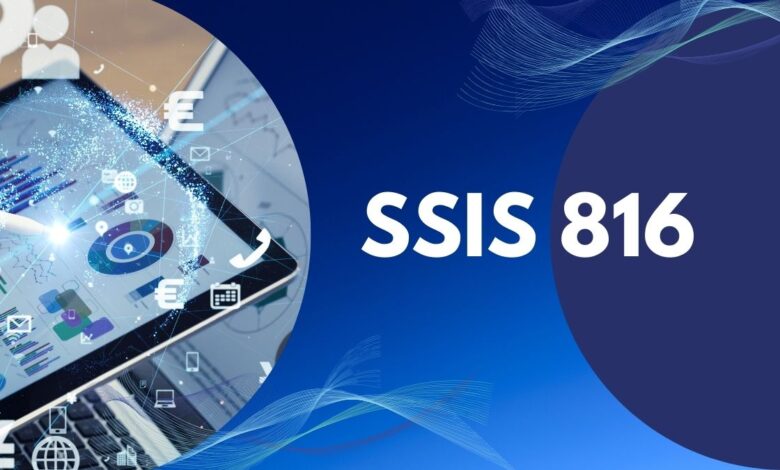The business scene is continually advancing, driven by steadily expanding information volumes and the requirement for ongoing bits of knowledge. In this powerful climate, customary ways to deal with information examination are arriving at their cutoff points. This is where CÑIMs (Cognitive Neural Integrative Machines) emerge as a revolutionary force, transforming how businesses operate.
What are CÑIMs?
CÑIMs are revolutionary approaches to AI and ML. CÑIMs differ from other AI systems that implement rather rigid algorithmic strategies In that manner, they imitate the function of the human brain. This enables them to learn, evolve and make their own decisions – a definitely higher step of LISP AI.
Here’s a breakdown of how CÑIMs function: Here’s a breakdown of how CÑIMs function:
- Deep Learning Techniques: CIMs use deep learning to learn from a huge amount of data without the need for clear code instructions, which is a part of the larger category of ML. This means that they can be able to continually increase the efficiency of performance over a period of time.
- Natural Language Processing (NLP): CÑIMs are capable of processing natural language of human, therefore they may communicate with the users and analyze textual data for getting necessary information.
- Cognitive Computing: CÑIMs have cognitive computing qualities that enable them to emulate human brain characteristics and make analytical conclusions that imitate human thinking.
All in all, CÑIMs are the extension of deep learning, NLP, and cognitive computing creating the new generation of intelligent machines that can learn the data, find the patterns, and produce the solutions that we can only dream about.
The Importance of CÑIMs in Modern Business
The data-driven economy of today presents businesses with a constant challenge: managing and creating the bigger value out of always increasing informational mass. CÑIMs play a critical role in addressing this challenge by:CÑIMs play a critical role in addressing this challenge by:
- Unlocking Actionable Insights: CÑIMs are able to make computations involving large amounts of data and patterns which might be unknown to traditional methods hence giving business better strategies for operations and competition.
- Enhancing Decision-Making: Due to the large number of patient records that the CÑIM has to analyze and considering the many factors involved, the result can be recommendation that can go a long way in supporting the strategic planning and management process. It enables business people to make right decisions based on the available information in the market more easily.
- Streamlining Operations: CÑIMs can relieve routine operations so that they are executed much more efficiently and in a shorter time.
Here’s a table summarizing the key benefits of CÑIMs for businesses:
| Benefit | Description |
| Enhanced Decision-Making | Gain actionable insights to support strategic choices. |
| Improved Efficiency | Automate tasks and optimize workflows. |
| Increased Productivity | Free up human resources for higher-level work. |
| Reduced Costs | Streamline operations and minimize errors. |
| Improved Customer Experience | Gain insights to personalize interactions and predict customer needs. |
drive_spreadsheetExport to Sheets
Types of CÑIMs
CÑIMs can be categorized into two main types:
- Hardware-Based CÑIMs: These systems employ the application-specific processors and neural chips containing the layout of a human brain meant for parallel processing. The hardware ecosystem utilizes “it” in applications requiring large computing and real-time data processing, such as image recognition and natural language processing.
- Software-Based CÑIMs: Cognitive subsets of these CÑIMs run on the conventional hardware components of a computer but utilize complex math principles and deep learning models to possess cognitive functions.
The Future of CÑIMs
CIMs are a huge improvement in the area of AI and promise much for the future in various fields. As CÑIM innovation keeps on developing, we can hope to see much more creative applications arise in regions such as:As CÑIM innovation keeps on advancing, we can hope to see significantly more imaginative applications arise in regions, for example,
- Personalized Medicine: Basically, CÑIMs can take a gander at a patient’s data to plan a treatment routine that suits that person and figure out the plausible sicknesses that the individual is probably going to have from now on.
- Autonomous Vehicles: CÑIMs can make possible immediate perception of surroundings to help self-driven automobiles to drive without the hazards of an accident.
- Cybersecurity: CÑIMs can classify and address cyber threats in real-time hence enhancing security status within organizations.
- Financial Services: CÑIMs can help in assessing the market trends as well as identify the likely financial risks in the market thus facilitating better investment decisions.
The uses of it are almost inexhaustible, and it is quite evident that they will define the future of business processes.
FAQs
1. What are the limitations of CÑIMs?
CÑIMs are still in the process of being improved by various restrictions. These include:
- Data dependency: Cress et al., posited that it are data-intensive in the training as well as in the best performance. An example of limitations found in research include: When data samples are limited or are collected from a specific segment only.
- Explainability: However, the findings of the study show that CMIs can provide some insight; understanding the reasoning behind their actions might be challenging. In some circumstances.
2. How can businesses prepare for the adoption of CÑIMs?
Here are some steps businesses can take to prepare for CÑIM adoption:Here are some steps businesses can take to prepare for CÑIM adoption:
- Develop a data strategy: A specific roadmap on how data is going to be collected, stored, and managed in order to enhance CNIM must be developed.
- Invest in talent: Personnel with advanced skills in AI, data science, and CNIM technology must be assembled to form the right talent.
3. What is the future of CÑIMs?
There is nothing that points towards the idea that CÑIMs are not to have an immensely bright future. we can expect to see advancements in areas like:As research and development continue, we can expect to see advancements in areas like:
- Explainable AI: Increasing the degree of outspokenness of the procedures by which CÑIM arrives at its conclusions.
- Neuromorphic computing: Designing standalone equipment that would mimic the actual human brain as well as improving CÑIM facilities.
- Integration with other technologies: The ability to build on the functionality of CÑIMs and integrate them with other innovative technologies of the digital world such as the blockchain and The Internet of Things.
Conclusion
They are able to learn, make appropriate decisions and adapt to the changing environments thereby creating so many opportunities for the business organizations in different fields. Hence, as CÑIM turns into a standardized technology one can predict the change of impact scale and transform the overall picture of work, living, and interaction with the surroundings. If companies adopted CÑIMs and promote responsible development, they could enrich their companies’ management and gain the ultimate success.




